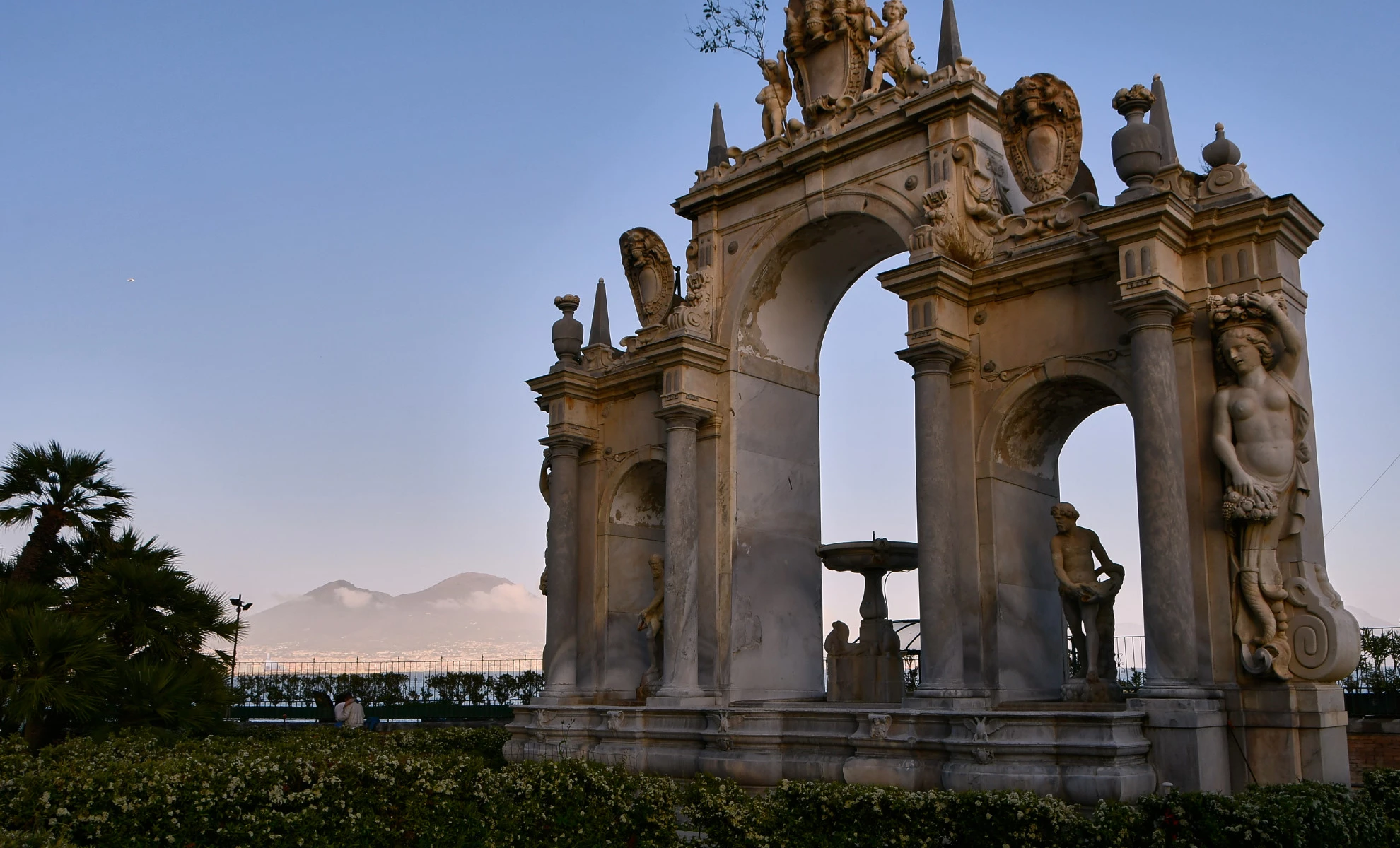An old popular adage has it that in Naples even the fountains cannot stand still. Pervaded by the chaotic restlessness that runs through this great capital of the Mediterranean, they have often changed their location according to the different urban structures that have followed one another over time.
Ph. Machi di Pace
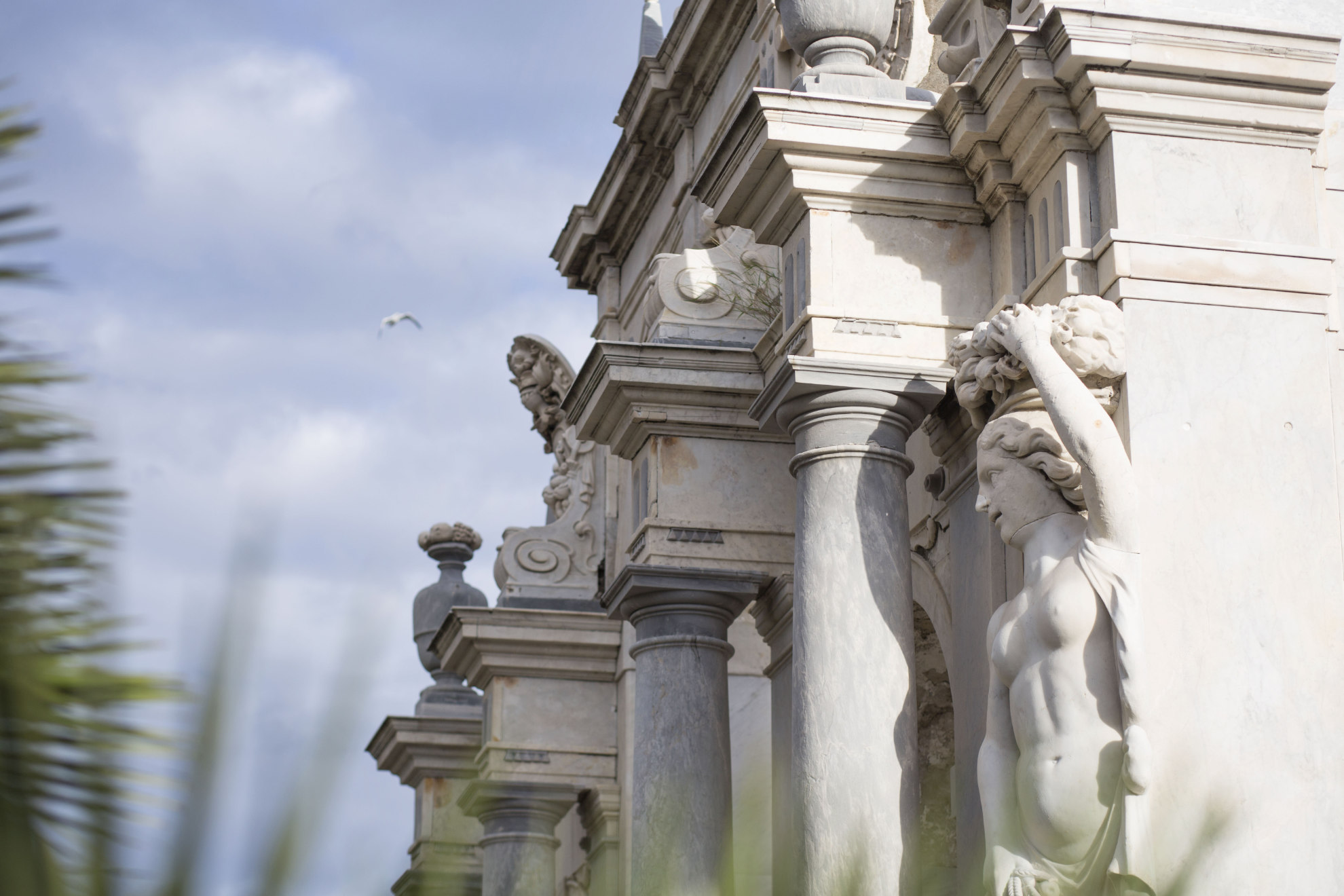
This is the case of the Fountain of Neptune, which today is located in Piazza Municipio after a long pilgrimage. But, above all, the Giant’s Fountain. One of the city’s most majestic monumental works.
It was in the early 1600s when Domenico Fontana, an archistar of the time, was entrusted with the redevelopment of what was to become Largo di Palazzo (today Piazza del Plebiscito) through the construction of the Royal Palace. In addition to the design of the Neapolitan palace, Fontana also thought of a large fountain that would close off the perspective of the square towards the sea.
Ph. Machi di Pace
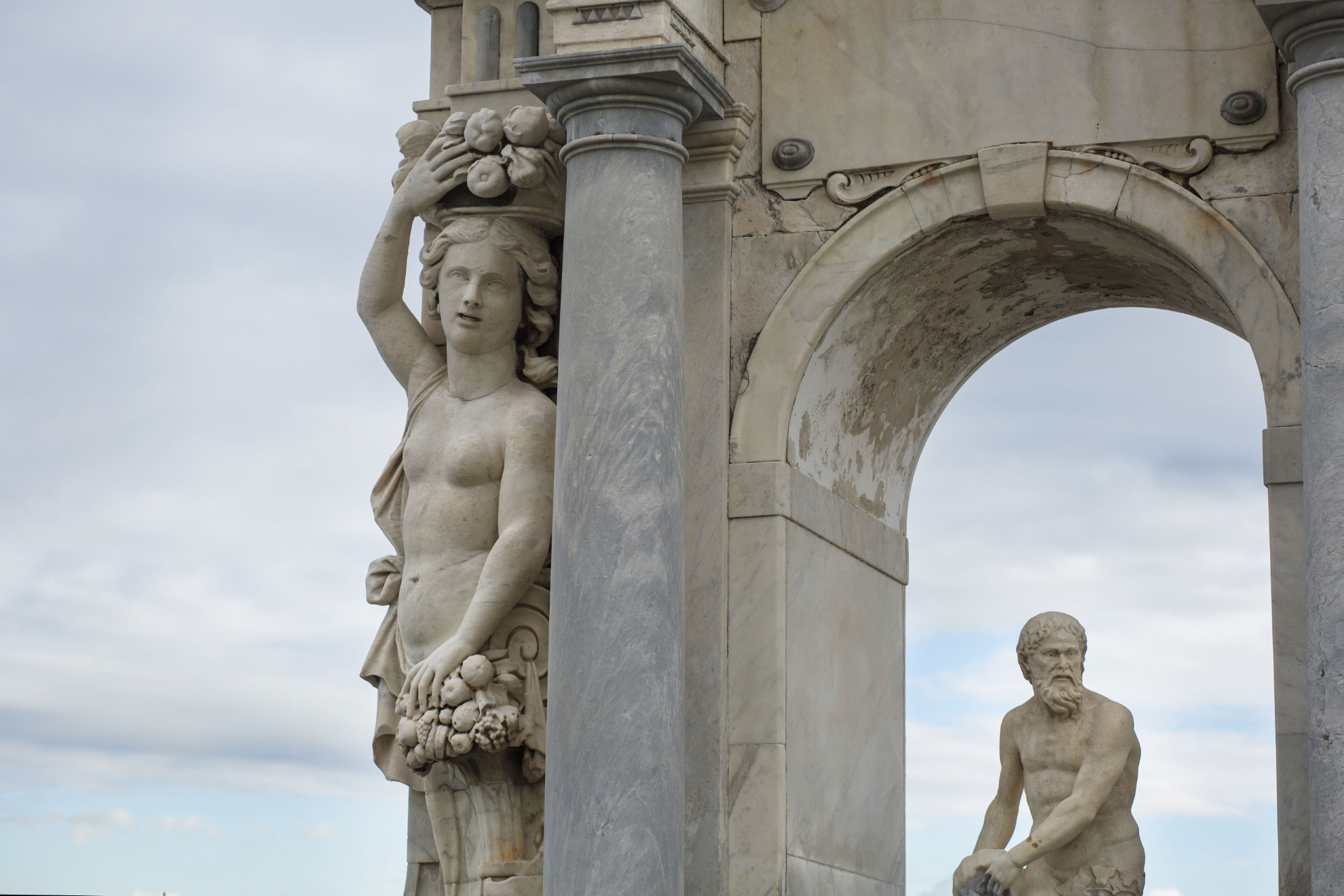
Commissioned by Viceroy Don Antonio Alvarez of Toledo, he called on two great sculptors of the time: Pietro Bernini (father of Gian Lorenzo) and Michelangelo Naccherino, who gave the city the great fountain that took the name “del Gigante”, after an ancient statue found in Cumae and located in that part of the square.
Ph. Machi di Pace
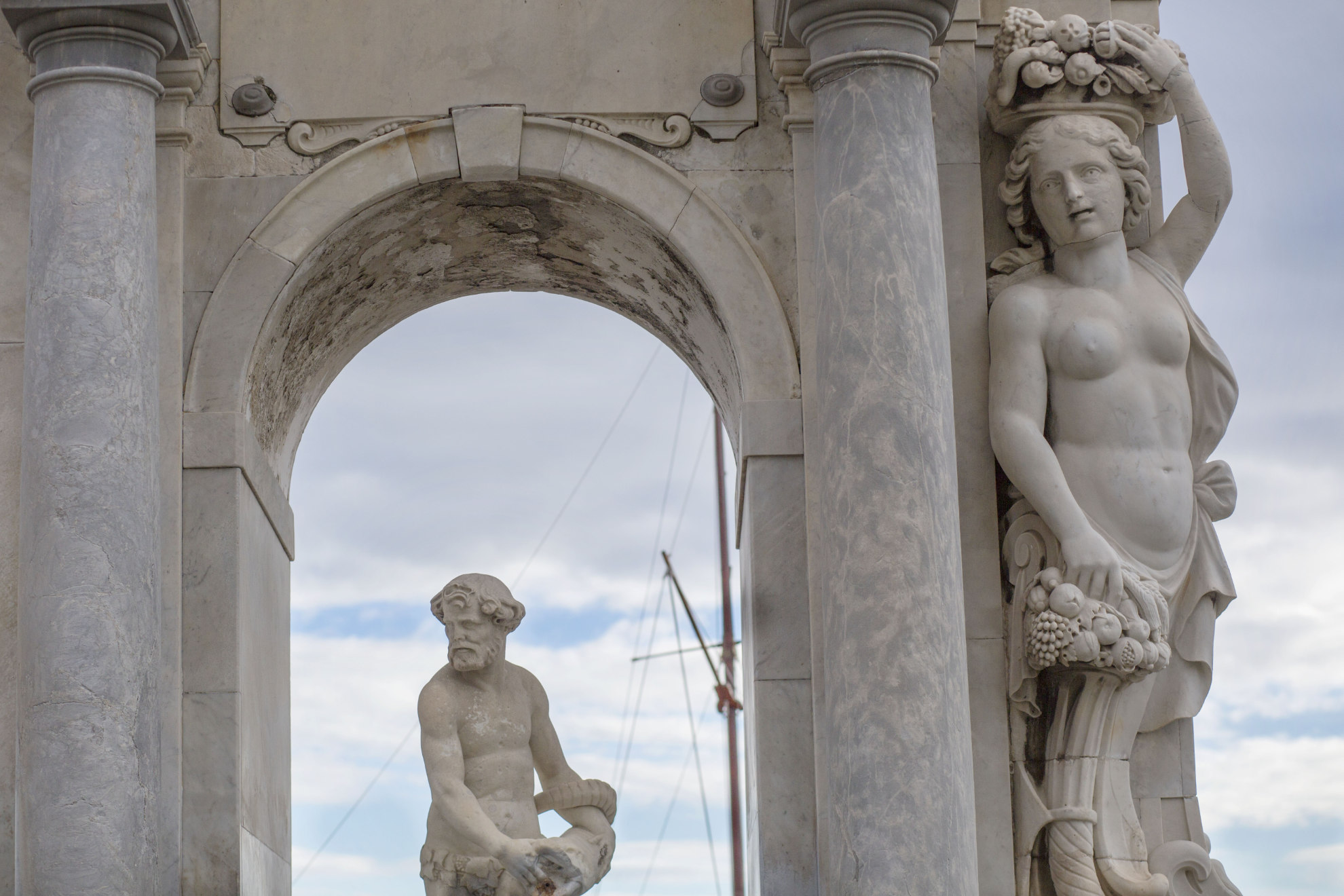
Since then the fountain began to travel. First at the port, at the Immacolatella gate; then in the area of Piazza del Carmine; then in the small gardens of Via San Pasquale a Chiaia, up to its present location on the seafront in Via Partenope. One of the most admired points of contemporary Naples.
The fountain has thus rediscovered its intimate contact with the sea, recalled by the marine divinities placed in the side arches (by Pietro Bernini) from which the water once gushed out and poured into the mixtilinear basin below.
The coat of arms of the viceroys | Ph. Machi di Pace
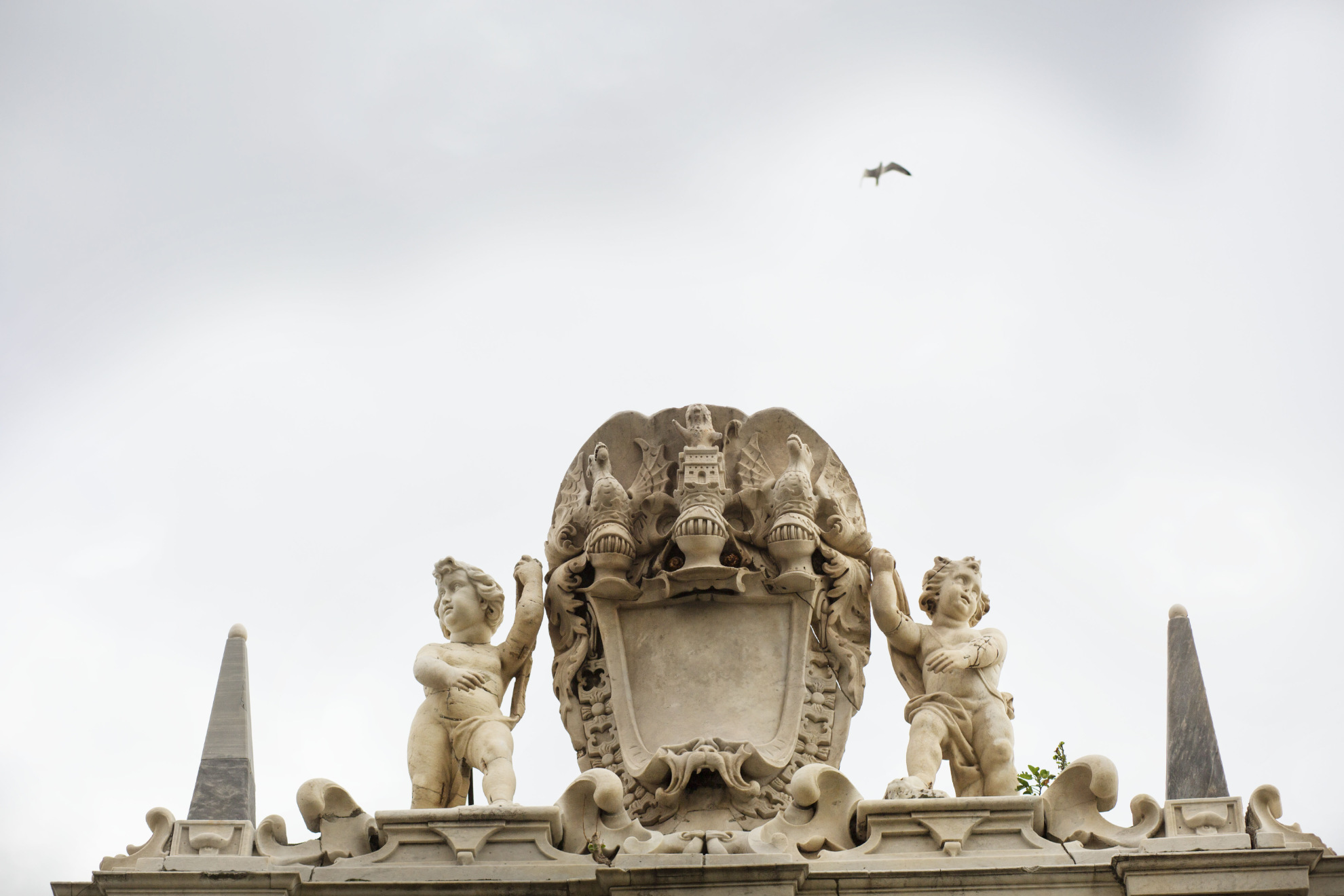
On either side of the fountain are the figures of two caryatids with cornucopias, the work of Naccherino and a symbol of luxuriance and abundance. Like its counterpart the Fountain of the Sebeto, on the seafront overlooking Mergellina, the Fountain of the Giant was in fact created for what we might call a propagandistic purpose: to honour the figure of the viceroys, whose coat of arms is not surprisingly sculpted at the top of the monument, between the royal coat of arms (larger, in the centre) and that of the city.
The Fountain of the Giant is therefore the emblem of a historical period that saw profound urban changes in the city, with the creation of the Via Toledo axis and the network of Spanish quarters.

